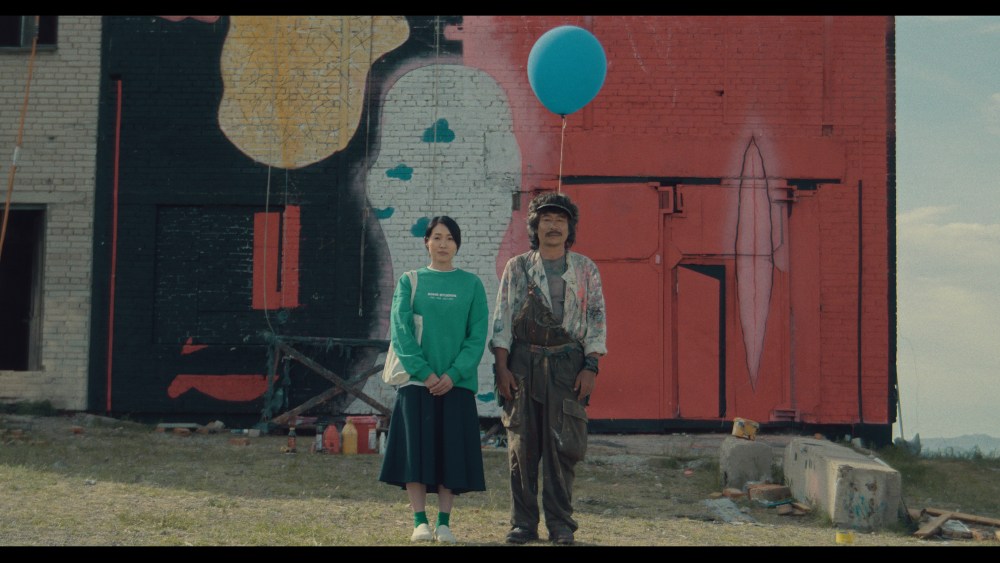TALLINN, ESTONIA — Mongolian filmmaker Sengedorj Yanchivdorj returns to competition at the Tallinn Black Nights Film Festival with “The Muralist,” one of 16 world premiere films in the main category.
Director Sengedorj, one of Mongolia’s most acclaimed and prolific filmmakers, won the festival’s Grand Prix for Silent City Driver in 2024 and will represent Mongolia in the International Feature Film category at the 98th Academy Awards in 2026.
A visually striking meditation on art, memory, and reconciliation, “The Muralist” is a film that Sengedorji always wanted to make. “I have been making films for over 20 years. One of my secret and biggest dreams was to make a film about artists. In my other films, there were always artists in the background. This time the muralist is the main character,” Sengedorji told Variety.
The film tells the story of Bayara, a once successful muralist who returns to Mongolia after years in Europe with nothing but a box of paints, a rooftop tent, and his faithful stray dog. He works every day to transform the walls of an abandoned factory into a vast mural depicting a mythical Mongolian landscape that contrasts with the surrounding green hills and creeping urbanization. As demolition approaches and a group of Japanese tourists take an interest in his art, Bayara is forced to confront the ghosts of the family he left behind while being watched over by a balloon tethered to him.
Shot by long-time collaborator Nergy Erdenekfyag, “The Muralist” features Sengedorj’s trademark poetic imagery. The film is a loose adaptation of the romantic novel “Pictures of the Soul” by Mongolian author Kisijalgal Dashdorj, who co-wrote and executive produced the film.
The director says that the heart of the film deals with the dilemma that all artists face. “It’s about choosing between art and life. Bayara chose art, but he doesn’t have balance (in life). So he regrets it. But I don’t want to tell the audience what to think. I want to leave it to the audience to decide.”
Symbolizing the blurred line between art and everyday reality, the balloons change color depending on Bayara’s mood as he confronts the past in nostalgic black-and-white flashbacks.
The score by the Italian-educated Mongolian composer Tsolmonbayar Munktokhci also reflects this evolution, with soaring piano solos giving way to a gentle, nostalgic trio of cello, violin, and piano.
Sengedorj said that after a long search, he found the lead actor, BS Baynerile, in Inner Mongolia. “Bayara’s character is very introverted and doesn’t talk much. It’s like it’s raining inside. It rains every time I see my daughter. All of that sadness and emotion had to be reflected in the actor’s eyes and face.”
Gegenzaya Ishiyama, a Mongolian actress based in Japan, will play Bayara’s estranged daughter.
Production took place actively and intensively from July to August 2024. The film was shot on location in an abandoned Soviet factory on the outskirts of Ulaanbaatar, with interior scenes filmed in one of the major Russian-era settings in Mongolia.
Looking ahead, Sengedorzi said he has completed the script for his next film, which he describes as an ambitious love story set at an Italian arts festival.
Director Tarin’s return to major competitions confirms the growing profile of Mongolian cinema in recent years, thanks to funding from Mongolia’s newly established National Film Council. Films such as “If I Could Hibernate” (Cannes 2023) and “City of Wind” (Venice Horizonti 2023) have garnered worldwide attention, and short films such as “Snow in September” have won top awards in Venice and Toronto.
The Muralist, co-produced by Jabukran Sonomdorj and Rukamduram Dashdorj and executive produced by Kisijalgar Dashdorj, premiered at the Tallinn Black Nights Film Festival on November 19th. The winner of the main competition will be announced on November 21st and the festival will close on November 23rd.

